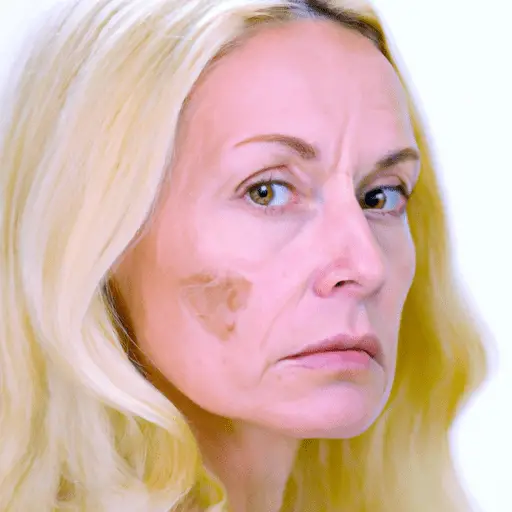Understanding Rosacea: Causes, Symptoms, and Treatments
-
Table of Contents
- Understanding Rosacea: Causes, Symptoms, and Treatings
- Key Takeaways
- Introduction: Unveiling the Mystery of Rosacea
- What Causes Rosacea?
- Symptoms of Rosacea
- Treatments for Rosacea
- FAQ Section
- 1. Is rosacea a sign of poor health?
- 2. Can rosacea be cured?
- 3. Is rosacea contagious?
- 4. Can rosacea be prevented?
- 5. Can rosacea cause permanent damage to the skin?
- Conclusion: Managing Rosacea Effectively
- Further Analysis
Understanding Rosacea: Causes, Symptoms, and Treatings

[youtubomatic_search]
Key Takeaways
- Rosacea is a chronic skin condition that primarily affects the face.
- The exact cause of rosacea is unknown, but it is believed to be a combination of hereditary and environmental factors.
- Symptoms of rosacea include redness, swelling, and visible blood vessels in the face.
- While there is no cure for rosacea, treatments can control and reduce the signs and symptoms.
- Understanding the triggers of rosacea can help manage the condition effectively.
Introduction: Unveiling the Mystery of Rosacea
Rosacea is a common, chronic, and sometimes progressive disorder of the facial skin, often characterized by flare-ups and remissions. It typically begins after the age of 30 as redness on the cheeks, nose, chin, or forehead that may come and go. Over time, the redness tends to become ruddier and more persistent, and visible blood vessels may appear. If left untreated, bumps and pimples often develop, and in severe cases, the nose may grow swollen and bumpy from excess tissue. This condition is referred to as rhinophyma.
What Causes Rosacea?
The exact cause of rosacea is unknown, but it is believed to be a combination of hereditary and environmental factors. According to the National Rosacea Society, a number of factors can trigger or aggravate rosacea by increasing blood flow to the surface of your skin. Some of these factors include hot drinks and spicy foods, alcohol, temperature extremes, sunlight or wind, emotions, exercise, cosmetics, drugs that dilate blood vessels, and others.
Symptoms of Rosacea
Rosacea signs and symptoms can vary greatly from one individual to another, and there is no diagnostic test for this skin condition. However, some or all of the following primary signs may be present:
- Persistent Redness: This is the most common individual sign of rosacea, often resembling a blush or sunburn that does not go away.
- Bumps and Pimples: Small red solid bumps or pus-filled pimples often develop. While these may resemble acne, blackheads are absent and burning or stinging may occur.
- Visible Blood Vessels: Small blood vessels become visible on the skin of many people who have rosacea.
- Eye Irritation: Many rosacea sufferers have eye symptoms, including a watery or bloodshot appearance, irritation and burning, or swelling of the eyelids.
Treatments for Rosacea
While there is no cure for rosacea, medical therapy is available to control or reverse its signs and symptoms. If you suspect that you may have rosacea, see a dermatologist for a diagnosis and appropriate treatment. Treatment for rosacea typically involves a combination of patient education, lifestyle changes, and prescription therapies to reduce inflammation and the other symptoms of rosacea.
FAQ Section
1. Is rosacea a sign of poor health?
No, rosacea is not a sign of poor health. It is a skin condition that affects the face. However, it can be associated with other health conditions such as cardiovascular disease and gastrointestinal disorders.
2. Can rosacea be cured?
While there is no cure for rosacea, treatments can control and reduce the signs and symptoms. Early diagnosis and prompt treatment can significantly reduce the risk of progression.
3. Is rosacea contagious?
No, rosacea is not contagious. You cannot catch rosacea from someone else, and you cannot give it to anyone.
4. Can rosacea be prevented?
While there is no way to prevent rosacea, understanding what triggers your rosacea and taking measures to avoid those triggers can help keep rosacea under control.
5. Can rosacea cause permanent damage to the skin?
If left untreated, rosacea can cause permanent damage to the skin, including persistent redness, dilated blood vessels, and thickening of the skin.
Conclusion: Managing Rosacea Effectively
Rosacea is a chronic skin condition that can cause significant physical and emotional distress. However, with a better understanding of the condition, its triggers, and appropriate treatments, individuals with rosacea can effectively manage their symptoms and lead a normal, healthy life. Remember, early diagnosis and prompt treatment can significantly reduce the risk of progression.
[youtubomatic_search]
Further Analysis
Understanding rosacea is the first step towards managing this chronic skin condition. While the exact cause of rosacea remains unknown, it is believed to be a combination of hereditary and environmental factors. Symptoms can vary greatly from one individual to another, but typically include persistent redness, bumps and pimples, visible blood vessels, and eye irritation. While there is no cure for rosacea, treatments can control and reduce the signs and symptoms. Understanding what triggers your rosacea and taking measures to avoid those triggers can help keep rosacea under control.


